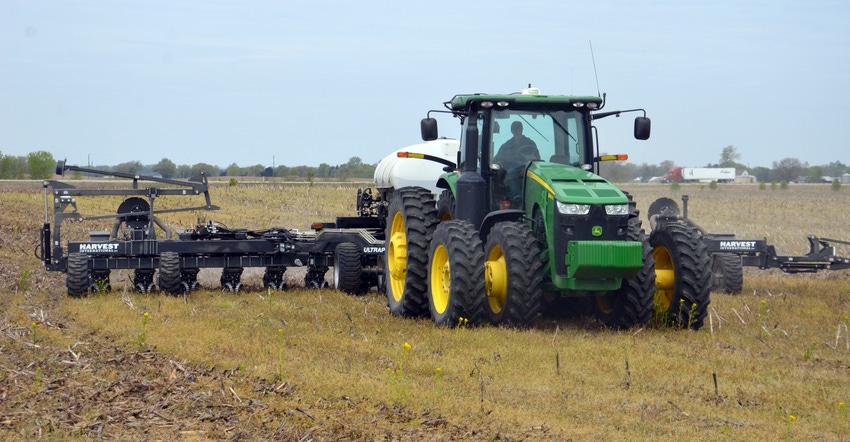
All eyes focus on planting each spring. While getting the crop planted and growing is critical, Purdue Extension ag economists suggest making sure someone is still monitoring grain markets closely during planting and early crop establishment.
“Historically, this is often the period when corn and soybean futures price for crops going into the ground peak,” says Nathaniel Thompson, a Purdue Extension ag economist. “The markets often carry a weather premium during this time of year.”
After studying how futures contracts trade by month over a long period of years, Thompson says the trend is fairly strong. “Corn prices for futures contracts tend to peak during June and early July, maybe even back into May,” he observes. “For soybeans, the peaks may come slightly later, often in June or July.
“We’re not suggesting that you should try to hit the absolute top day for prices,” he says. “Instead, we recommend paying keen attention to markets during these months. Based on history, this is when futures contracts for these crops put in peaks. If you don’t have much ’22 crop sold, there could be good opportunities to lock in profitable prices during these periods.”
Extra financial risk
“You likely have more invested per acre this year compared to past years because input costs were sharply higher,” says Extension ag economist Jim Mintert, director of the Purdue Center for Commercial Agriculture. “This extra investment means you’re managing more financial risk than normal this year.”
Michael Langemeier, associate director for the center and an Extension ag economist, says breakeven costs are up 23% for corn and 12% for soybeans compared to one year ago. He recommends preparing your own crop budgets, covering both variable and fixed costs, to determine your own breakeven price. That will give you a benchmark for making marketing decisions.
Based on Purdue’s crop budgets — which includes cash rent, labor and fixed machinery costs — the breakeven for corn on average land is $5.40 to $5.50 per bushel for 2022, with soybean’s breakeven around $12.50 per bushel.
If you have higher-quality land, breakeven prices drop 30 to 40 cents per bushel. For lower-quality land, raise the breakeven 40 to 50 cents per bushel. Ideally, prepare your own budget and determine your true breakeven prices.
Look for opportunities
“Based on increased risk, it makes sense to look for marketing opportunities and begin locking in some sales for ’22 crops,” Mintert says. “We know many people are reluctant to sell early in the season, partially because they don’t want to miss out on higher prices should fundamentals change and corn and/or soybeans move higher.”
There is also the real possibility they could move lower, he emphasizes. Based on budgets and current projections for fall crop prices, even a small negative move could put corn and soybeans below breakeven levels. “One strategy if you’re worried about missing out on possible price increases is to use call options now,” Mintert says.
Crop insurance could be another way to reduce risk and build confidence in making marketing decisions, Langemeier says. “With reasonably strong crop prices, when the spring crop insurance price is locked in, you should have a good buffer if you buy crop insurance.”
About the Author(s)
You May Also Like




